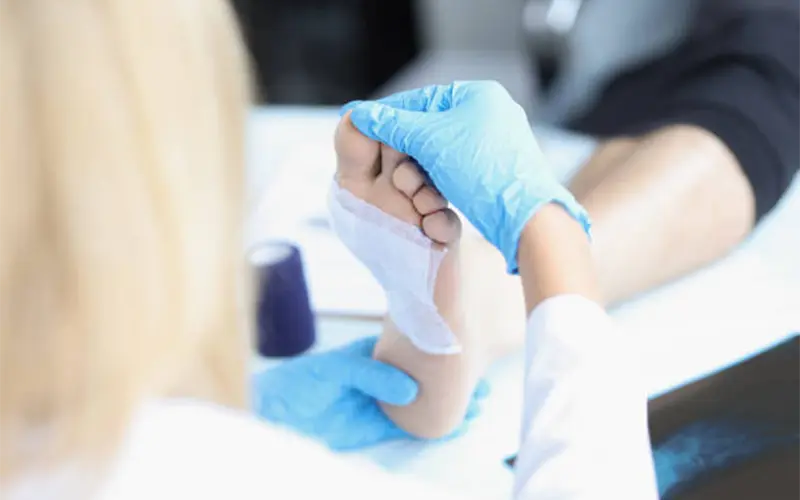Ulcers

An ulceration or ulcer is usually a painless sore from excessive pressure at the site. Traumas from various sources are also potential causes. Continued pressure on the injured skin creates further damage and will frequently lead to infections that may penetrate to the bone.
Treatment relies on early recognition of the ulceration by a podiatric surgeon; local wound care, dressing and antibiotics. Other measures, such as custom orthotics or specific shoe gear, may be necessary to adequately relieve pressure on the area. Once an ulcer has healed, it is important to continue to see a podiatric foot and ankle surgeon to avoid future problems.
A recent study done at Loyola University Medical School has shown that there is a direct correlation between the regularity of care and the severity of ulcers. Patients who were seen for diabetic foot care regularly had fewer ulcers and lesser severity. Those with the worse ulcers, requiring the greatest level of care, were seen least. In simple terms, $300 worth of preventative care can obviate $25,000 for a lower extremity amputation. This is why the Centers of Disease Control, The Public Health Service, The Veterans Administration, The American Podiatric Association and The American Diabetic Association recommend regular foot examinations for all diabetics.
A diabetic foot ulcer is the result of skin tissue breaking down from constant pressure and forming an open sore or wound, typically on the bottom of your foot. People with chronic conditions, such as diabetes, are particularly vulnerable to foot ulcers.
Swelling, irritation, and/or odor from one or both feet and discharge are common red flags for the presence of ulcers. If you start to notice any of these symptoms, it’s important to consult your Podiatrist immediately.
Common causes:
- Poor Circulation
- Diabetes
- Nerve Damage
- Irritated or Wounded Feet
- History of Smoking
Treating foot ulcers:
Depending on the severity, several treatment options include:
- Debridement, or the removal of dead or infected tissue from the ulcer
- Dressings, or the application of special materials, solutions, or ointments to the wound
- Off-loading, or the use of casts or boots to help decrease pressure at the ulcer site.

Contact one of our Upperline Health convenient clinics to get your Ulcers treatment started.
